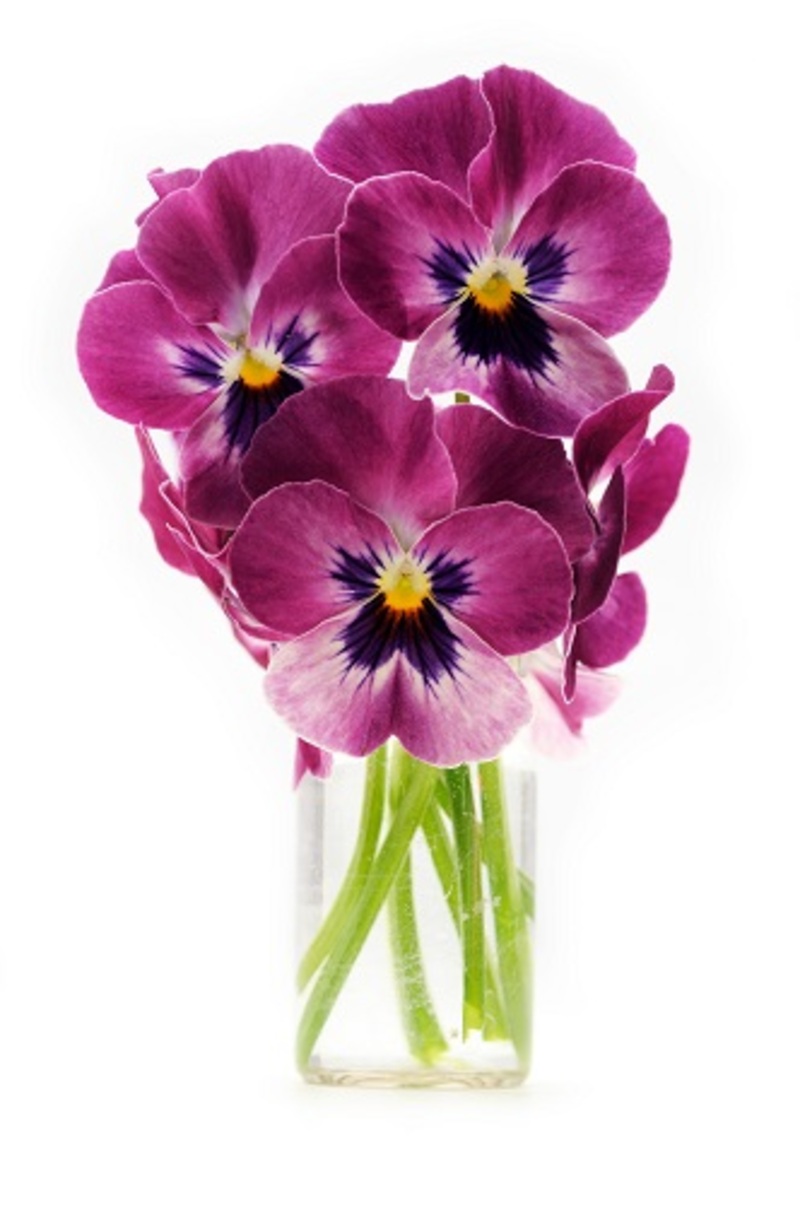Three effective ways to retain the freshness of flowers
Posted on 18/08/2025
Three Effective Ways to Retain the Freshness of Flowers
Fresh flowers add unmatched beauty, fragrance, and elegance to any room or occasion. However, one of the most common challenges faced by flower enthusiasts and gift recipients alike is how to keep cut flowers fresh for longer. Whether you're preserving a bouquet gifted on a special occasion or just want to enjoy the vibrancy of your garden's cuttings indoors, learning how to maximize their lifespan is essential.
If you've ever wondered about effective methods to extend flower freshness, you're in the right place. In this comprehensive article, we'll dive into three scientifically-backed and practical strategies for flower freshness retention, as well as share some handy tips to ensure your blooms look breathtaking for days.
Why Do Flowers Wilt So Quickly?
Understanding what causes flowers to lose their fresh appearance is the first step towards prolonging their vibrancy. After being cut, flowers are deprived of their natural water source, making them susceptible to dehydration. Bacteria, mold, and yeast can rapidly multiply in the water, clogging the stems and reducing water uptake.
Other factors like temperature, sunlight, and even ethylene gas (released by fruits) can accelerate the aging process of blooms. Therefore, proper care and attention are crucial if you want to enjoy the freshness of your flowers for as long as possible.

Method 1: Mastering Water and Vase Hygiene
1.1 Choose the Right Vase and Keep It Clean
The first and arguably most important step in preserving the freshness of flowers is to use a clean vase. Residues of previous arrangements can introduce bacteria that hasten decay. Thoroughly wash your vase with hot soapy water and rinse well before adding new water and flowers.
1.2 Use Fresh and Cool Water
- Always fill the vase with fresh, cool water (not warm or hot), as most flowers absorb cool water more efficiently.
- Change the water every two days to prevent bacterial buildup and keep your blooms hydrated.
1.3 Trim the Flower Stems Properly
- Cut stems at a 45-degree angle using sharp, clean scissors or a knife. This increases surface area and prevents stems from sitting flat at the bottom of the vase, maximizing water absorption.
- Remove any leaves below the water line to inhibit bacterial growth.
1.4 Avoid Flower Overcrowding
Don't overcrowd the vase--air circulation is just as important as hydration. Overcrowding can lead to faster decay as stems have less space and can trap moisture, fostering bacterial growth.
Why This Method Is Effective
Retaining flower freshness starts with ensuring the water and environment are free from contaminants. Clean vases, regularly changed water, and properly trimmed stems can collectively double the vase life of many popular flowers such as roses, lilies, and tulips.
Method 2: Feed Your Flowers for Longer Freshness
2.1 Flower Food: The Secret Ingredient
Commercially available packet flower food is specially formulated to keep cut flowers fresh for longer. It usually contains three primary components:
- Sugar - feeds the flowers and extends their vibrancy
- Acidifier - adjusts water pH for better absorption
- Antimicrobial agent - inhibits bacterial growth
Always dissolve the food completely in the vase water before adding your flowers.
2.2 DIY Flower Food Recipes
If you don't have commercial flower food, try these easy alternatives to preserve flower freshness:
- Add 1 teaspoon of sugar, 1 teaspoon of bleach, and 2 teaspoons of lemon or lime juice per quart of water.
- Mix 2 tablespoons of apple cider vinegar plus 2 tablespoons of sugar per quart of water--vinegar acts as an antibacterial agent.
*Note: Always check specific care guides for delicate varieties or exotic flowers, as some may require different treatments.
2.3 Avoid Certain Substances
- Do not use aspirin, soda or pennies in the vase--while popularly suggested, studies show they can often do more harm than good.
Why Flower Food Works to Retain Freshness
Feeding your flowers helps replace lost nutrients and supports stem health. The combination of nourishment and bacterial suppression can drastically increase your bouquet's longevity and keep the petals looking vibrant and perky.
Method 3: Optimize the Display Environment
3.1 Keep Away from Direct Sunlight and Heat
Fresh flowers last longer in cool environments. Place your vase in an area away from harsh, direct sunlight, radiators, heating vents, or appliances. Excess heat accelerates wilting and evaporation, resulting in limp stems and dropped petals.
3.2 Steer Clear of Fruit Bowls
- Ripe fruits release ethylene gas, which can age and wilt flowers faster. Avoid placing your bouquet near fruit bowls on the kitchen counter or dining table for maximum bloom freshness.
3.3 Monitor Humidity Levels
While flowers thrive in moderately moist environments, excessive humidity encourages mold. If you live in a humid area, change the vase water frequently and consider using a small fan for air circulation.
3.4 Nighttime Placement for Extra Freshness
For maximum flower freshness retention, move your arrangement to a cooler room or even the refrigerator overnight (as long as it's not near fruits or vegetables). This extends their lifespan by slowing respiration and water loss.
Environmental Impact on Flower Freshness
Creating the optimal environment is as important as hydration and feeding. Cool, indirect light, stable humidity, and proper placement can add days of beauty to freshly cut blossoms.
Bonus Tips: Extra Steps for Flower Freshness Longevity
- Re-cut flower stems every two or three days, even after initial trimming.
- Remove wilted blooms and damaged leaves promptly to prevent the spread of decay.
- Mist your flowers lightly with clean water to boost humidity for delicate varieties.
- Use gloves (especially when handling lilies) to avoid transferring oils from your skin.
- For stubborn blooms (like tulips), wrap tightly in damp newspaper for a few hours to rehydrate limp stems.
Common Mistakes to Avoid When Trying to Keep Flowers Fresh
- Delaying water change: Stale water quickly becomes a breeding ground for bacteria.
- Ignoring signs of decay: Wilted petals or slime on stems can hasten the aging of the whole bouquet.
- Excessive handling: Frequent touching can bruise delicate petals.
- Using dirty or rusty scissors: This introduces bacteria and can crush stems, blocking water flow.
- Leaving flowers in cars or hot rooms: Heat exposure leads to rapid wilting.
Flower Freshness FAQs
How long should cut flowers last with proper care?
With optimal care, most fresh bouquets retain bright blooms for up to 7-14 days, depending on the flower type. Some, like carnations and chrysanthemums, can last even longer, while more delicate varieties (like peonies or poppies) may have a shorter window.
Are there specific flowers that naturally stay fresh longer?
Yes! Long-lasting flowers include alstroemeria, orchids, lilies, carnations, chrysanthemums, and zinnias. Roses, tulips, and daffodils are more delicate but respond well to meticulous care.
Can I use distilled or filtered water for my flowers?
Absolutely. Filtered or distilled water removes chemicals and minerals that may be present in tap water, which can sometimes inhibit water uptake. For best results, combine with fresh flower food.

Conclusion: Enjoying Fresh Flowers for Longer
There's nothing quite like the joy of vivid, fragrant fresh flowers brightening up your space. By focusing on the three most effective ways to retain flower freshness--maintaining water and vase hygiene, feeding your flowers, and optimizing the display environment--you'll not only extend the life of your bouquets but also maximize your enjoyment of every petal and blossom.
Remember: Small actions like changing the water, keeping stems trimmed, and storing arrangements in cool places can make a world of difference. Combine all these tips, and you'll ensure your flowers stay fresh, stunning, and full of life for as long as possible.
Quick Summary: How to Keep Flowers Fresh
- Use clean vases and fresh, cool water
- Cut stems at an angle and remove submerged leaves
- Add commercial or homemade flower food
- Keep away from heat, sunlight, and ripening fruit
- Change water every 2 days and re-trim stems regularly
By following these effective tips for retaining flower freshness, your beautiful blooms can brighten up your life for many days to come.
Related Resources for Flower Lovers
- More expert advice on keeping cut flowers fresh
- FTD: How to Keep Flowers Fresh Longer
- Better Homes & Gardens: Cut Flower Care Tips
Implement these methods today and enjoy the freshness of your flowers for much longer!
Latest Posts
Three effective ways to retain the freshness of flowers
Hydrangea Care: Strategies for Long-lasting Blooms
Unearthing the Romance of Red Roses for Valentine's Day
Unlocking the secrets held by birth month flowers
Peony flowers: The expressive language of their colors and symbolism






